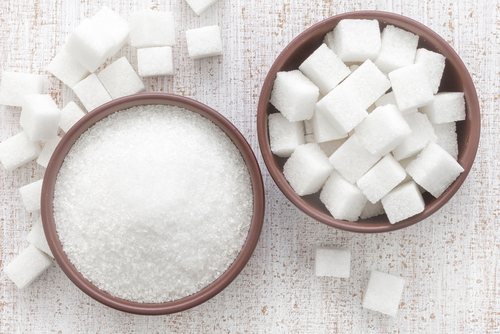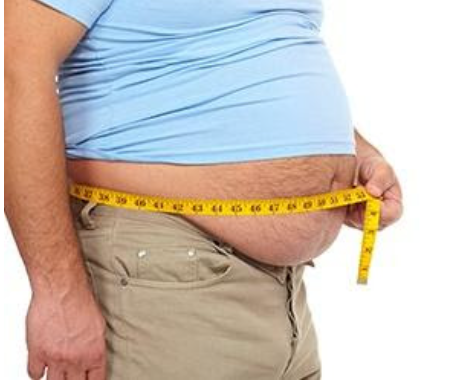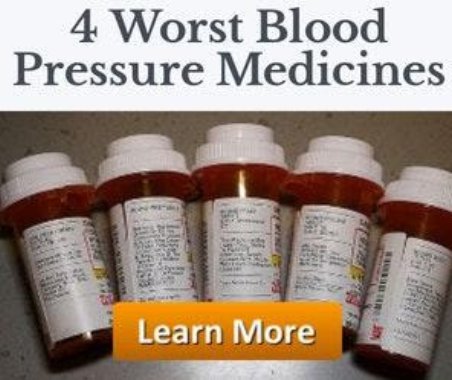Most people nowadays are fully aware just how dangerous sugar is for human health. Many try to cut back on how much sugar they consume, or they switch over to alternative sweeteners like sucralose to prevent obesity, metabolic syndrome and diabetes.
But just how much do we know about sucralose? Recent research has uncovered some pretty scary health risks associated with the sweetener, and as research continues, more negative effects are surfacing.
What is Sucralose?
Sucralose is one of the most ubiquitous artificial sweeteners used around the world in calorie-reduced foods and beverages. It’s marketed as being better for your waistline, but what exactly is it doing to your overall health?
Sucralose is a chlorinated sucrose derivative. In non-science terms that means it is derived from sugar but has been altered. It also means it contains chlorine.
Making sucralose is quite a lengthy process that takes place in a lab. Hydrogen-oxygen groups are replaced with chlorine atoms, which gives sucralose its intense sweetness.
Let’s discuss how sucralose was discovered. WARNING: It’s not a pretty story.
Sucralose was found through the development of a new insecticide compound years ago. That’s right… somewhere in a brightly-lit lab, scientists were trying to invent a compound that killed insects, and instead they ended up accidentally making an artificial sweetener. My, that sounds very healthy!
So, let’s just recap, sucralose was an accidental discovery that came from an attempt to come up with a chemical that would KILL insects. It was never, ever meant to be consumed. But manufacturers soon realized they could market is as a “natural sugar substitute” to the general public, who would be none-the-wiser that the stuff is actually highly toxic.
But, when a buck can be made it usually IS made, and in 1998, the FDA approved sucralose for use in foods and beverages like baked goods, frozen dairy desserts, diet beverages and sugar substitutes like Splenda. In 1999, the FDA expanded its approval for use as a general-purpose sweetener in ALL CATEGORIES of food and beverages, and now you see it everywhere.
5 Health Risks Associated with Sucralose
Now that you know where sucralose came from, let’s take a look at the health risks associated with this artificial sweetener.
1. May Cause Diabetes
My mother was a diabetic and she religiously used Splenda in an effort to keep her blood sugars low. Funny how her blood sugars remained elevated. Could it have something to do with the fact that Splenda has been linked to the development of diabetes?
A study published in the journal Diabetes Care found that individuals who consumed Splenda on a regular basis were at risk of developing the disease. According to the study, daily consumption of diet soda (just because it says 0 calories does not mean it’s good for you) was associated with a 36% greater risk of metabolic syndrome and a 67% greater risk of type 2 diabetes.
2. Linked to Leaky Gut
Your body cannot digest sucralose. This means it travels all the way through your GI tract and damages it along the way. Sucralose kills the good bacteria in your gut (probiotics) and harms your intestinal wall, causing leaky gut.
3. May Cause Weight Gain
Most people turn to artificial sweeteners like sucralose in an effort to lose weight. Well, if that’s why you’ve been using sucralose you won’t be too happy to hear that epidemiological studies in humans and lab studies in animals both suggest an association between using artificial sweeteners and body weight gain.
4. Increased Risk of Chron’s Disease and IBS
Researchers from New Jersey Medical School found that consuming Splenda caused IBS symptoms, ulcerative colitis and Chron’s Disease. This isn’t surprising since we know sucralose cannot be digested and causes damage to the lining of your entire GI tract.
5. May Create Carcinogenic Compounds When Heated
According to a study published in the Journal of Toxicology and Environmental Health, when sucralose is cooked at high temperatures, it can create a dangerous class of potentially toxic chemical compounds called chloropropanols. This is really bad because so many “healthy” baked goods on the market contain sucralose.
Food and Beverages Where Sucralose Lurks
It is incredibly important to read food labels. I’ve said this before on this blog but will continue to say it. Food manufacturers are NOT your friends. They are in business to make money off of us, even if that means putting things into our food that have been proven to be dangerous.
ALWAYS READ LABELS.
With this in mind, here are some of the most common food and beverage items that contain sucralose/Splenda (some of these may absolutely shock you):
- Certain diet sodas
- Certain sparkling waters
- Certain diet iced tea products (including Arizona and Snapple products!)
- Ocean Spray® drinks
- Some juices
- “Sugar free” sauces and syrups (if it says sugar free, you turn that package over immediately and read the label)
- Chewing gum (especially sugar free gums)
- “Diet,” “fat free” and “no sugar added” cocoa mixes
- Certain protein and diet bars as well as diet powders and shakes (including Atkins and Met-Rx® products)
- Many “sugar free” baked goods (remember, these may contain carcinogens that cause cancer)
- “Sugar free” ice cream
- “Sugar free” and “light” yogurt products
- “Sugar free” chocolates
- “Sugar free” mints and lozenges
- Some toothpastes
And this isn’t even an exhaustive list!!
The bottom line is, you have to be very careful when it comes to sugar alternatives. In my opinion, it is better to try and cut sugar out of your diet completely, and if you absolutely can’t (but you can, you just don’t want to), then limit your sugar intake but at least use real, raw cane sugar and not some chemical created in a lab somewhere.
If you’ve been using sucralose hoping it would help you maintain good blood sugars, you’re most likely not very happy after reading this blog post. But I’m about to share something that will make you VERY happy.
You don’t have to have type 2 diabetes anymore.
It’s not a life sentence.
Learn how one doctor is using all-natural methods to help her patients beat their diabetes and throw their insulin out for good. Pick up your copy of Simple Blood Sugar today!
 Validating...
Validating... 





1 Comment